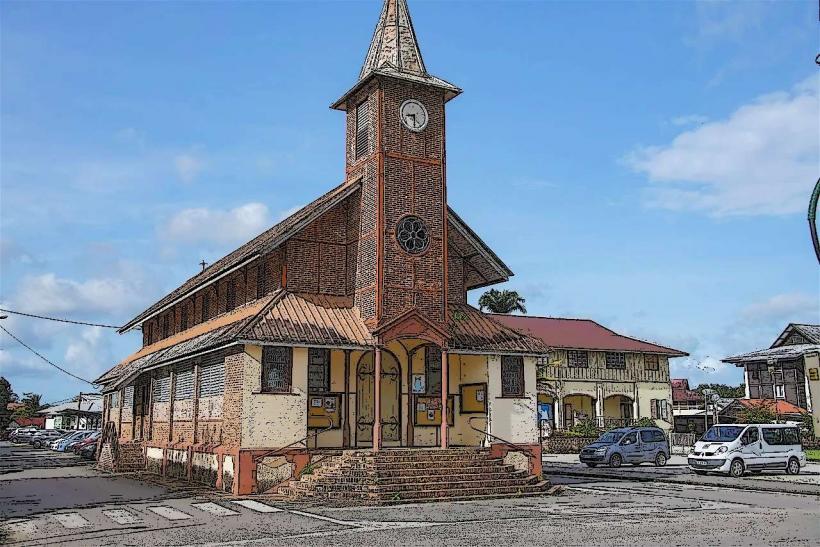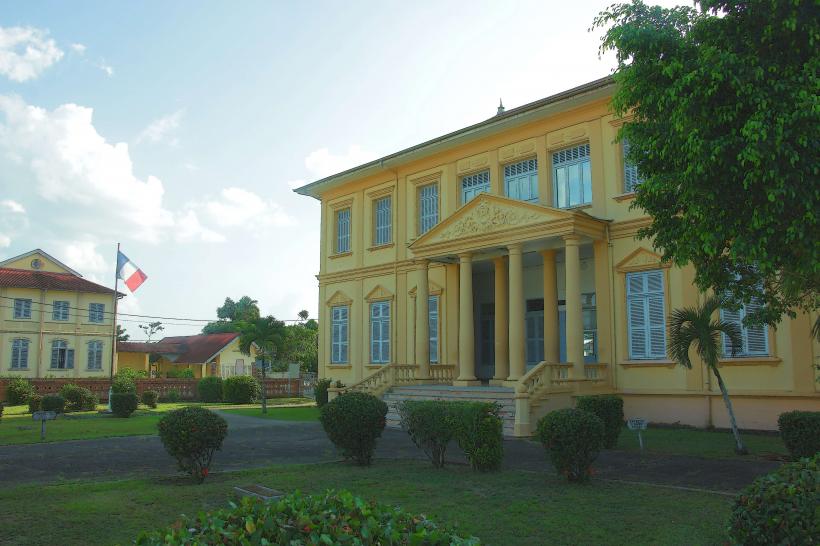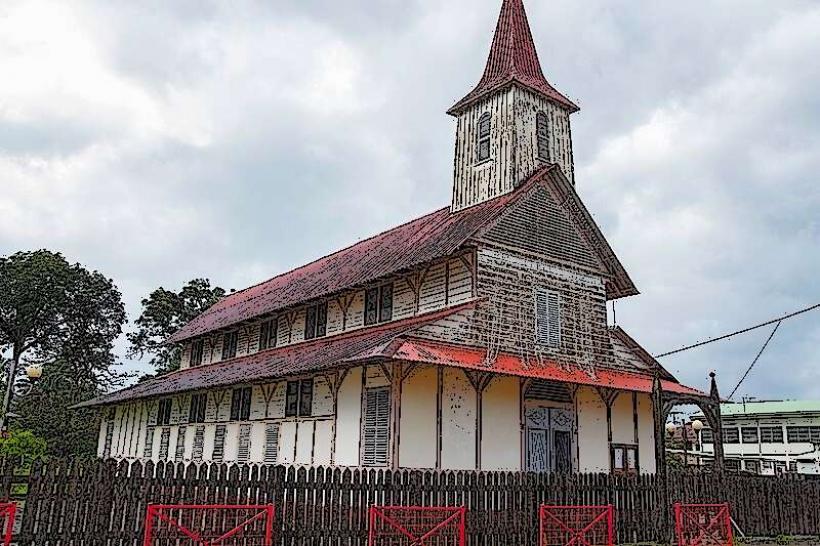Information
Landmark: Former Prison of Saint-LaurentCity: Saint Laurent du Maroni
Country: French Guiana
Continent: South America
The Former Prison of Saint-Laurent (French: Ancien Camp de la Transportation de Saint-Laurent) is a historic site located in Saint-Laurent-du-Maroni, a town in French Guiana. This prison complex, which operated from the late 19th century until the mid-20th century, was part of the French penal system in the region, alongside the infamous Îles du Salut (Salvation Islands) and other penal facilities in French Guiana.
History and Role in the Penal System
- Establishment: The Prison of Saint-Laurent was established as part of the broader French penal colony system in French Guiana, which began in 1852. This system was used to exile criminals, political prisoners, and others convicted by the French courts. Saint-Laurent-du-Maroni, located near the Maroni River on the border with Suriname, was a central hub for the penal colony.
- The prison was a key part of the Camp de la Transportation network, a larger penal system that included several facilities spread across the region. The complex was designed to house prisoners awaiting deportation to the Îles du Salut, as well as those serving their sentences in the main land-based prison.
Architecture and Structure
- Layout: The Saint-Laurent prison complex was relatively large, with stone walls, guard towers, and cell blocks designed to accommodate hundreds of prisoners. The prison had a reputation for harsh conditions, with overcrowding being a significant issue.
- The prison was built in a military-style design, with multiple sections, including solitary confinement cells, labor areas, and communal living quarters. Forced labor was an integral part of the prison experience, with prisoners often sent to work in the jungle, on farms, or in construction.
- Overcrowding: Like many other prisons in the French Guiana penal colony system, the Saint-Laurent prison became overcrowded, with a high number of prisoners relative to the available facilities. This overcrowding contributed to the poor living conditions and high mortality rates among the inmates.
Conditions at the Prison
- Harsh Treatment: The conditions in the Saint-Laurent prison were known for being brutal. Prisoners faced inadequate food, tropical diseases (such as malaria), poor sanitation, and lack of medical care. Many inmates died from the harsh conditions, and the prison gained a reputation for being a death trap.
- Forced Labor: As with most penal colonies, prisoners at the Saint-Laurent prison were subjected to forced labor, often in extremely difficult and dangerous environments. They were tasked with clearing forests, working in fields, and constructing buildings, all under grueling conditions.
Notable Prisoners
- Political Prisoners: Saint-Laurent prison housed several high-profile political prisoners, including those exiled from France for their involvement in political movements or crimes. These prisoners were often sent to the prison complex before being transferred to the Îles du Salut.
- Alfred Dreyfus: Though Dreyfus is most famously associated with Devil’s Island (Îles du Salut), he was initially held in Saint-Laurent before being sent to the island. His wrongful conviction and imprisonment for treason sparked the famous Dreyfus Affair, a major political scandal in France during the late 19th century.
End of the Penal System and Closure of the Prison
- The penal colony system in French Guiana was officially abolished in 1953, and the prison in Saint-Laurent ceased operating shortly thereafter. The French penal system began to change, with more humane approaches to justice and prison conditions being adopted in mainland France.
Current Status and Visitor Experience
- Preserved as a Museum: Today, the Former Prison of Saint-Laurent is a museum and historical site. It is part of the Memory and History of the Penal System in French Guiana and provides a detailed account of the penal colony system, the conditions faced by prisoners, and the broader colonial history of the region.
- Exhibits and Tours: The site features guided tours, displays, and exhibits that showcase artifacts, documents, and historical information about the prison, the penal colony, and the lives of the prisoners. Visitors can see preserved parts of the prison complex, including cells, the walls, and the prison's former administrative areas.
- Historical Significance: The site offers insight into one of the most notorious prison systems in history, which was marked by exile, forced labor, and human suffering. Visitors can also learn about the lives of those incarcerated in Saint-Laurent and the impact of the penal colony on French Guiana's social and cultural history.
Conclusion
The Former Prison of Saint-Laurent stands as a powerful reminder of the brutal history of the French Guiana Penal Colony. It reflects the harsh treatment of prisoners and the inhumane conditions they endured during the 19th and 20th centuries. Today, the prison serves as an important historical site, preserving the legacy of the region’s penal system and providing visitors with an opportunity to reflect on the impact of colonialism and the treatment of prisoners.







